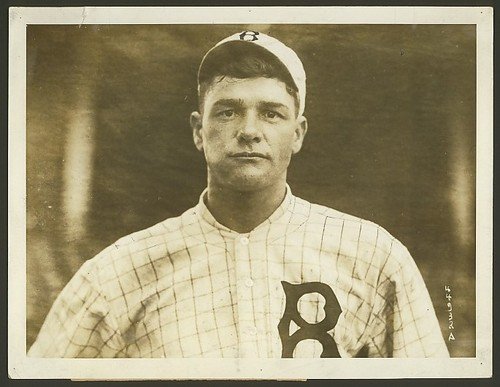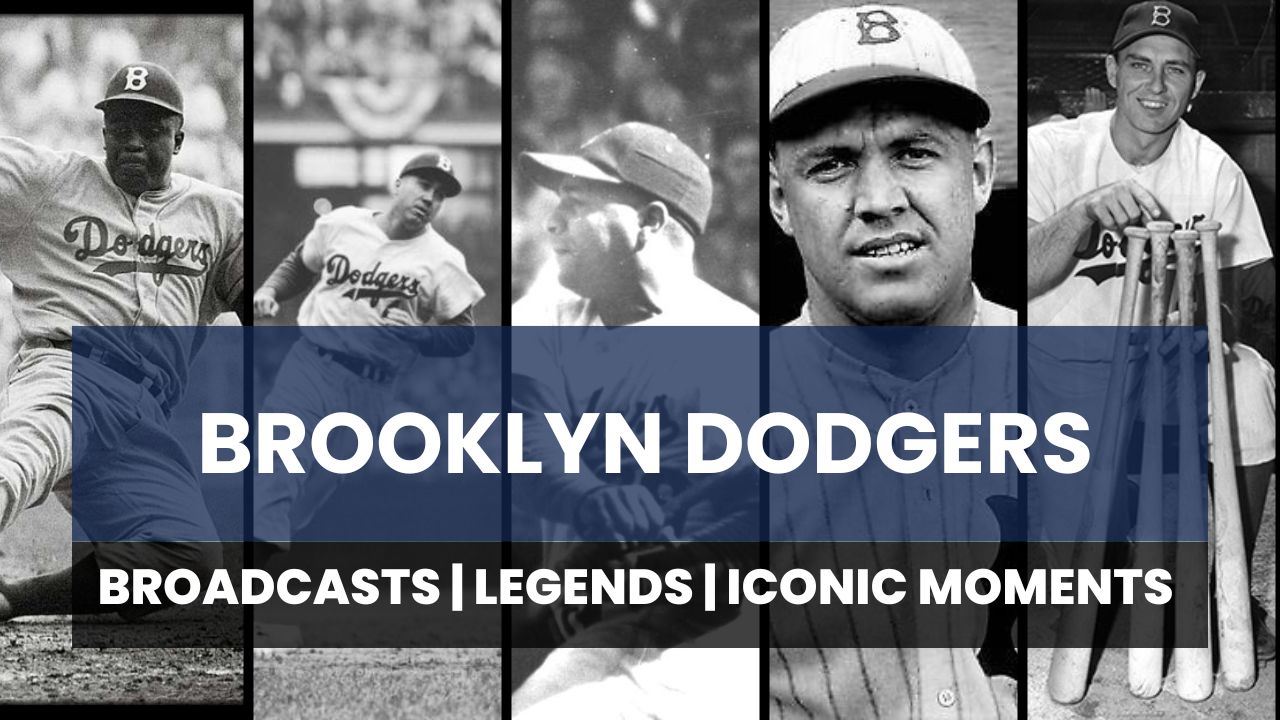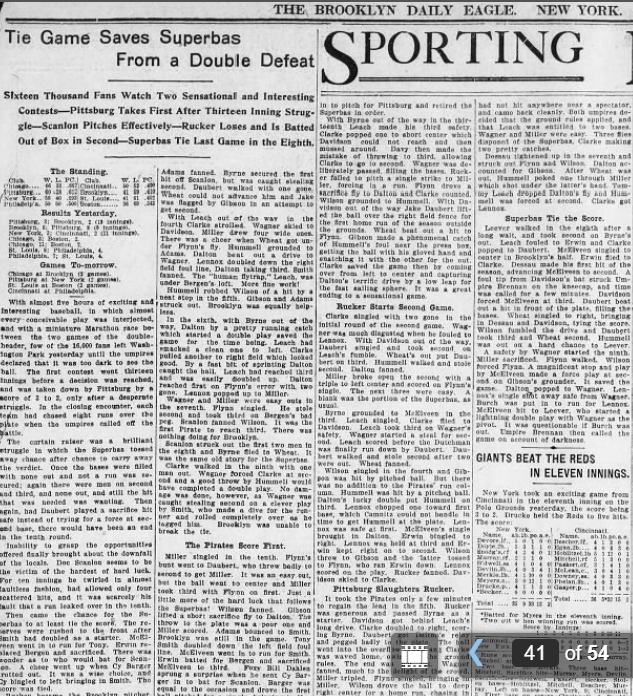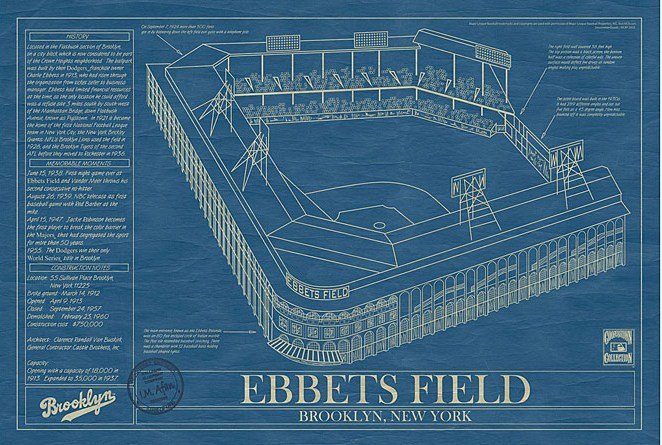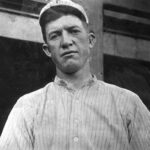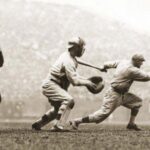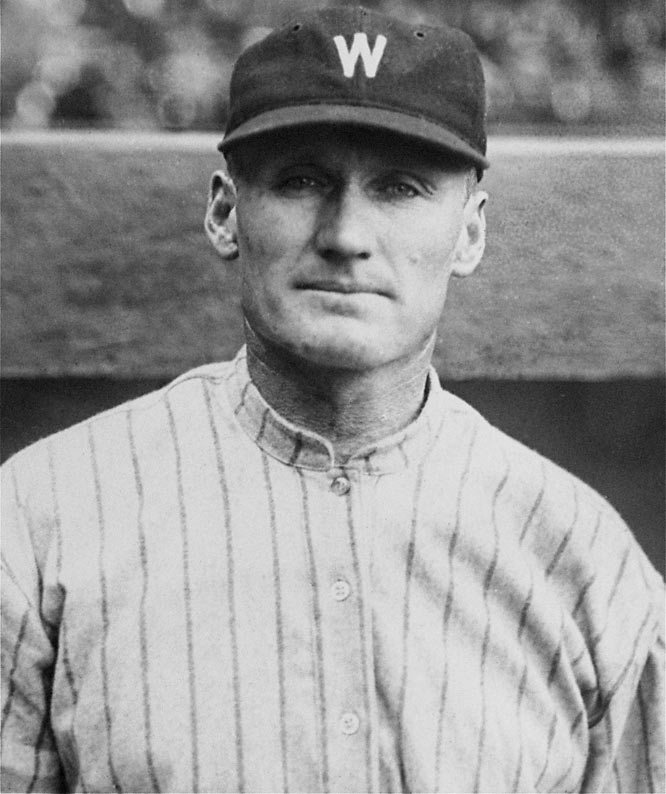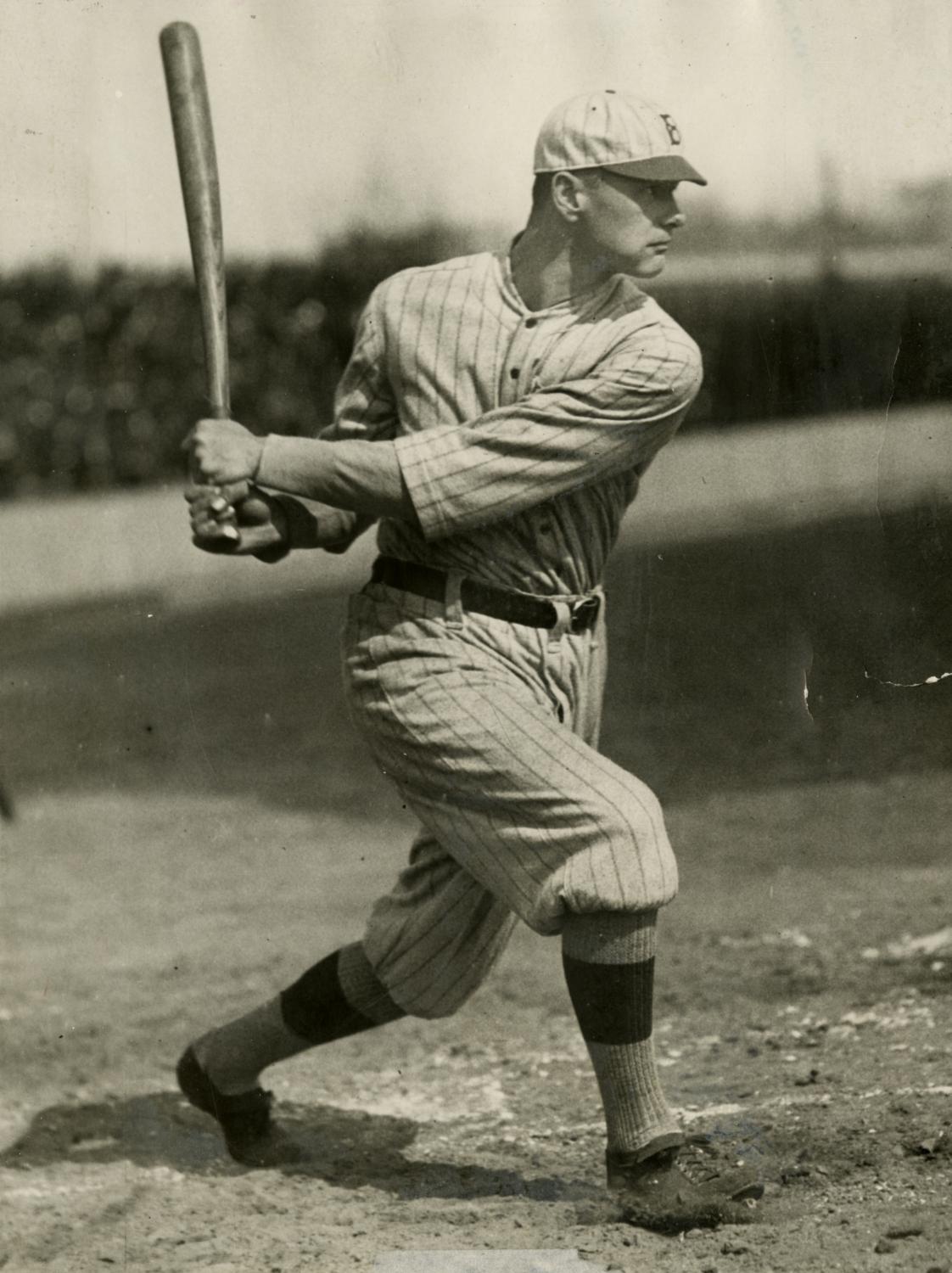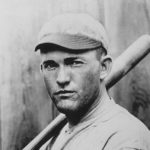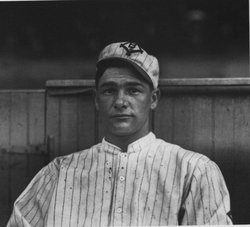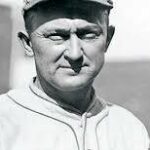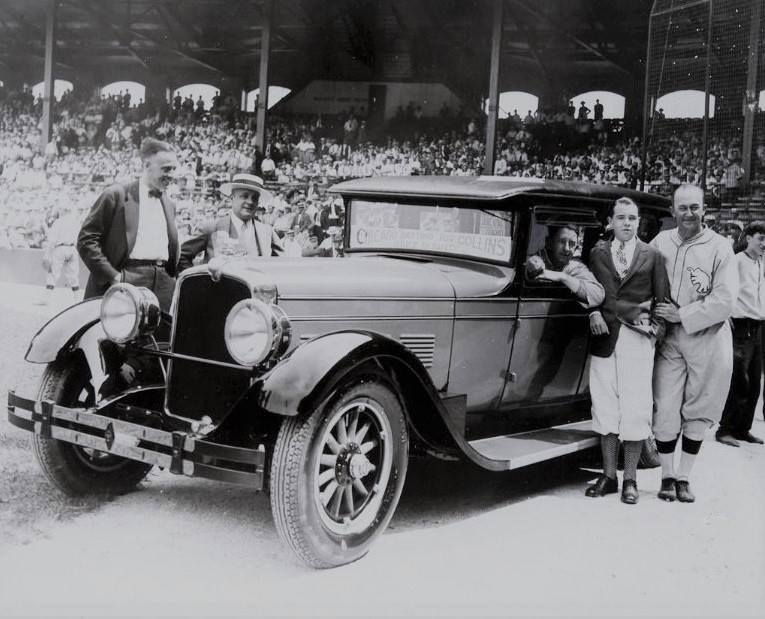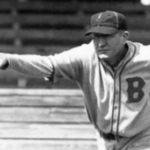Zack Wheat Stats & Facts
Zack Wheat
Position: Leftfielder
Bats: Left • Throws: Right
5-10, 170lb (178cm, 77kg)
Born: May 23, 1888 in Hamilton, MO
Died: March 11, 1972 in Sedalia, MO
Buried: Forest Hill Cemetery, Kansas City, MO
Debut: September 11, 1909 (3,230th in major league history)
vs. NYG 4 AB, 0 H, 0 HR, 0 RBI, 0 SB
Last Game: September 21, 1927
vs. CLE 1 AB, 1 H, 0 HR, 1 RBI, 0 SB
Hall of Fame: Inducted as Player in 1959. (Voted by Veteran’s Committee)
View Zack Wheat’s Page at the Baseball Hall of Fame (plaque, photos, videos).
Full Name: Zachariah Davis Wheat
Nicknames: Buck
View Player Info from the B-R Bullpen
View Player Bio from the SABR BioProject
Relatives: Brother of Mack Wheat
Players Who Debuted 1909 Year
Zack Wheat
Jack Quinn
Harry Hooper
Art Fletcher
Stuffy McInnis
Russ Ford
Ray Collins
Jack Meyers
Jim Scott
The Zack Wheat Teammate Team
C: Mickey Cochrane
1B: Jake Daubert
2B: Eddie Collins
3B: Jimmy Johnston
SS: Rabbit Maranville
LF: Al Simmons
CF: Ty Cobb
RF: Casey Stengel
SP: Burleigh Grimes
SP: Rube Marquard
SP: Lefty Grove
SP: Eddie Rommel
RP: Jack Quinn
M: Connie Mack
Vintage Baseball HOT ON EBAY
Card Collections ENDING SOON ON EBAY
MOST WANTED ROOKIE CARDS
VINTAGE SPORTS TICKETS
Baseball Hall of Famers
Notable Events and Chronology for Zach Wheat Career
Biography
“One of the grandest guys ever to wear a baseball uniform, one of the greatest batting teachers I have seen, one of the truest pals a man ever had and one of the kindliest men God ever created.” — Casey Stengel (this quote appears on Zack Wheat’s Hall of Fame page)
From 1909, when he reported to Washington Park after almost three days on a train from Louisiana, until 1926, when his legs gave out at Ebbets Field, Zach Wheat was a fixture in left field for Brooklyn. He was the club’s stellar performer, a quiet team leader who was never thrown out of a game in a 19-year career. He batted over .300 13 times, and remains the Dodgers’ all-time leader in games played, at-bats, hits, doubles, triples, and total bases.
Baseball Magazine wrote in 1917:
“. . .Zach Wheat is the easiest, most graceful of outfielders with no close rivals . . . But he is much more than a brilliant outfielder. He is a substantial one on every important count. His throwing arm is exceptionally good. He is fleet of foot on the base paths, and he is one of the most dreaded and murderous sluggers . . .”
The magazine also wrote:
“What Lajoie was to infielders, Zach Wheat is to outfielders . . .”
Wheat was a graceful, lefthanded, line-drive hitter who could handle the curveball so well that Giants manager John McGraw forbade his pitchers to throw him any. Wheat topped the .320 mark only once during the dead-ball era – in 1918, when he had a 26-game hitting streak and won the batting title with a .335 average. He was 32 when the ball was made livelier, and his production soared. He batted .320 or better each year from 1920 through 1925, with .375 marks in both 1923 (when he played just 98 games after a long holdout) and 1924, and a .359 mark in ’25. He had averaged about five home runs a year through 1919; from ’20 through ’25, he averaged more than 12 a season.
Wheat generally batted clean-up and was rarely expected to bunt. One afternoon he found himself in a sacrifice situation, awaiting the obvious sign from manager Wilbert Robinson, who was coaching third. Because Uncle Robby had forgotten the bunt sign, he went through an improvised set of gestures. Realizing they did not convey the message, Robinson simply pantomimed a bunt. Team captain Wheat decided he hadn’t received the bunt sign and lined the next pitch out of the ballpark. As Wheat rounded third, the jubilant Robinson slapped him on the back, though he could have slapped him with a fine.
Wheat’s last home run for Brooklyn signaled the end of his great Dodger career. He had injured his heel and, with only a few games to play in the 1926 season, was resting his aching legs. Sent in to pinch hit, he pulled a pitch to right field and raced down the line. As the ball cleared the wall, he got a charley horse. As he hobbled on, his other leg failed him, and he lurched into second base. He sat down on the bag as time was called. Robinson and the umpires consulted. Finally, Wheat got his to feet. With the crowd wincing with him on every step, he virtually crept over to third. It took him an estimated five minutes to finally score.
Released by the Dodgers on New Year’s Day, 1927, Wheat signed with the Athletics. He batted .324 his final season, pinch hitting and playing 62 games in the outfield for a Philadelphia team that had ten .300 hitters, including Ty Cobb (.357) and Al Simmons (.392). He finished his career in the American Association in 1928. After retiring to his native Missouri, he was nearly killed in an automobile crash, and was hospitalized for five months. The all-time leader in games played in left field, he was named to the Hall of Fame by the Committee on Baseball Veterans in 1959. His brother, McKinley “Mack” Wheat, caught for the Dodgers for parts of 1915 through 1919, and for the Phillies in 1920-21.
@ET-DC@eyJkeW5hbWljIjp0cnVlLCJjb250ZW50IjoicG9zdF90YWdzIiwic2V0dGluZ3MiOnsiYmVmb3JlIjoiTGVhcm4gTW9yZSBhYm91dCB0aGUgdGVhbXMsIHBsYXllcnMsIGJhbGwgcGFya3MgYW5kIGV2ZW50cyB0aGF0IGhhcHBlbmVkIG9uIHRoaXMgZGF0ZSBpbiBoaXN0b3J5IC0gLSAtIC0gLSAtIC0gIiwiYWZ0ZXIiOiIiLCJsaW5rX3RvX3Rlcm1fcGFnZSI6Im9uIiwic2VwYXJhdG9yIjoiIHwgIiwiY2F0ZWdvcnlfdHlwZSI6InBvc3RfdGFnIn19@
Vintage Baseball HOT ON EBAY
Card Collections ENDING SOON ON EBAY
MOST WANTED ROOKIE CARDS
VINTAGE SPORTS TICKETS
Baseball Hall of Famers
Factoids, Quotes, Milestones and Odd Facts
Once described by Branch Rickey as the best outfielder Brooklyn ever had, Zack Wheat batted over .300 in 13 of his 18 years with the Dodgers. The quiet-spoken Wheat won the 1918 batting title and batted .333 in the 1920 World Series. Though he was scrappy, Wheat wore a 5 1/2-inch shoe, and frequently suffered ankle injuries.
Played For
Brooklyn Dodgers (1909-1926)
Philadelphia Athletics (1927)
Similar: Sam Rice, Tony Gwynn
Best Season, 1924
At the age of 36, Wheat finished third in NL MVP voting when he hit a career-best .375. He finished second in the league in batting, OPS, doubles, total bases, hits, and doubles. If only Rogers Hornsby had broken his wrist.
Post-Season Appearances
1916 World Series
1920 World Series
Description
“Wheat is a dark-browed, dark-haired silent man of the easy-going type,” wrote Baseball Magazine in 1917. “Nomanager and no umpire ever had any trouble with him. Playing baseball is his sole occupation and his sole interest in the summer months. He isn’t the least temperamental or excitable, but a steady, sturdy, brilliant ballplayer of the best possible type.”
Factoid
In a game against the Boston Braves, Zack Wheat of the Dodgers once hit a ball on the fly into the crease of a flag in the right field corner at Ebbets Field. Reportedly, the ball sat nestled in that position for a moment before sliding out onto the playing field, where it was retreived. The right fielder fired the ball to home to catch Wheat as he slid, but after some consultation, the two-man crew awarded Wheat with a home run, based on ground rules. National League President John Heydler upheld the ruling and Wheat kept his peculiar home run.
Scouting Report
In January 1917, Baseball Magazine assessed Wheat’s defensive ability:
“Tris Speaker may be the greatest outfielder in the world. We have no wish to rob the Texan of his well-won honors. But Zach Wheat is the easiest,most graceful of outfielders with no close rivals. It is one of the sights of the diamond to see the great Brooklyn star with his long easy stride speeding like an arrow across the outfield, and without a perceptible effort, spearing the ball with his gloved hand.”
The publication also writes of Wheat: “The lithe muscles, the panther-like motions of the Indian are his divine right. But he is much more than a brilliant outfielder. He is a substantial one on every important count. His throwing arm is exceptionally good. He is fleet of foot on the base paths, and he is one of the most dreaded and murderous sluggers in the National League.”
Analyzing his swing, the magazine wrote: “there is no chop hitting with Wheat, but a smashing swipe which, if it connects, means work for the outfielders.”
Minor League Experience
Wheat played in Enterprise, Kansas, in 1906; in Fort Worth in 1907; for Shreveport in 1908 (where he batted .268); and in Mobile in 1909, before his purchase by Brooklyn.
Post-Season Notes
After a tight race in 1916, which Brooklyn won, Wheat felt the pennant chase cost his team in the Fall Classic.
“I believe this close finish accounted at least in part for our poor showing in the World’s Series,” Wheat said. “There was a natural let-up or relaxation which isn’t difficult to explain. We felt that we had won out and we eased up a little. And the time was so short [between the end of the season and the Series], we never got going again.”
Notes
Ten years apart, Wheat finished in the top ten in National League MVP voting. In 1914 he was ninth, and in 1924 he was third… Wheat played all of a 26-inning, 1-1 tie between the Brooklyn Robins and the Boston Braves in 1920.
Hitting Streaks
29 games (1916)
26 games (1918)
24 games (1924)
20 games (1923)
Mack’s Old-Timers
The 1927 Philadelphia A’s boasted all-time greats and senior citizen ballplayers Eddie Collins (age 40), Ty Cobb (40), Zack Wheat (39), Baby Doll Jacobson (36) and Jack Quinn (43). The team finished in second place.
Factoid
In the off-season, Zach Wheat raised mules on his farm in Missouri. Some of them were bought by the U.S. Army and were used as pack-mules in Europe during the First World War.
Quotes About Wheat
“What Lajoie was to infielders, Zach Wheat is to outfielders, the finest mechanical craftsman of them all.” — Baseball Magazine, January 1917
Other Resources & Links
Coming Soon
If you would like to add a link or add information for player pages, please contact us here.

